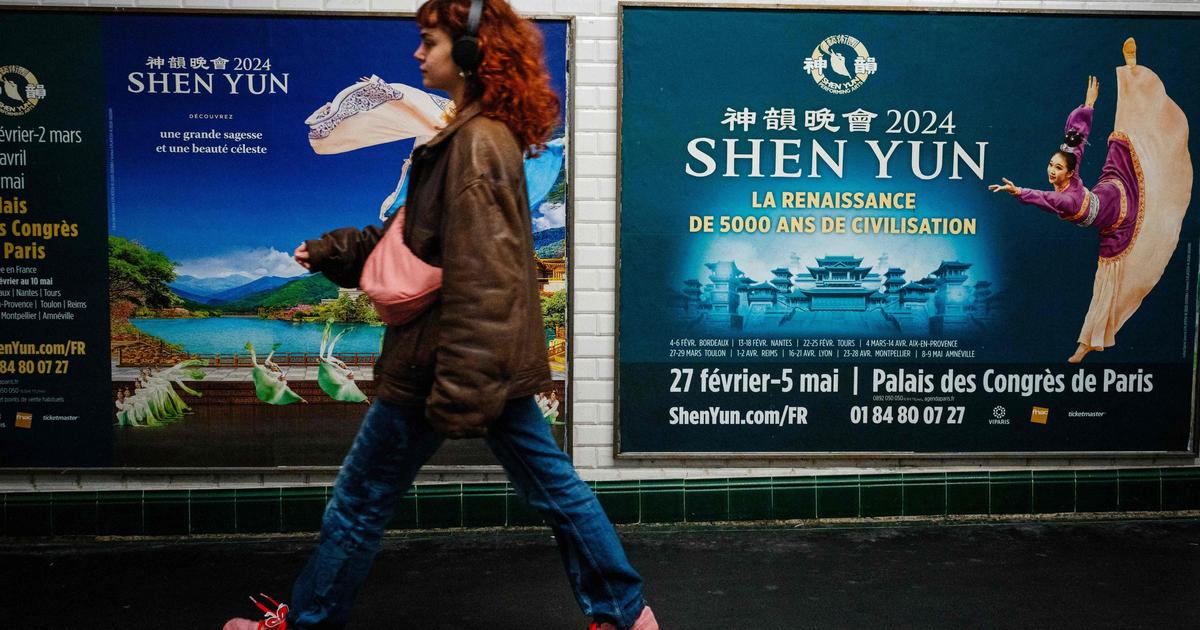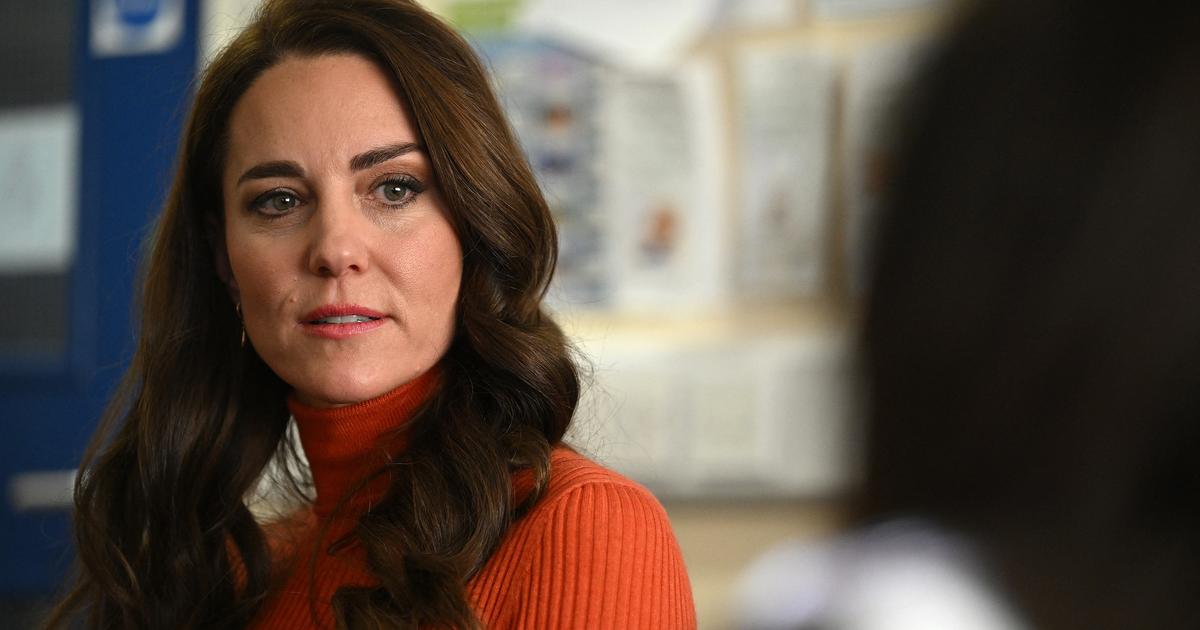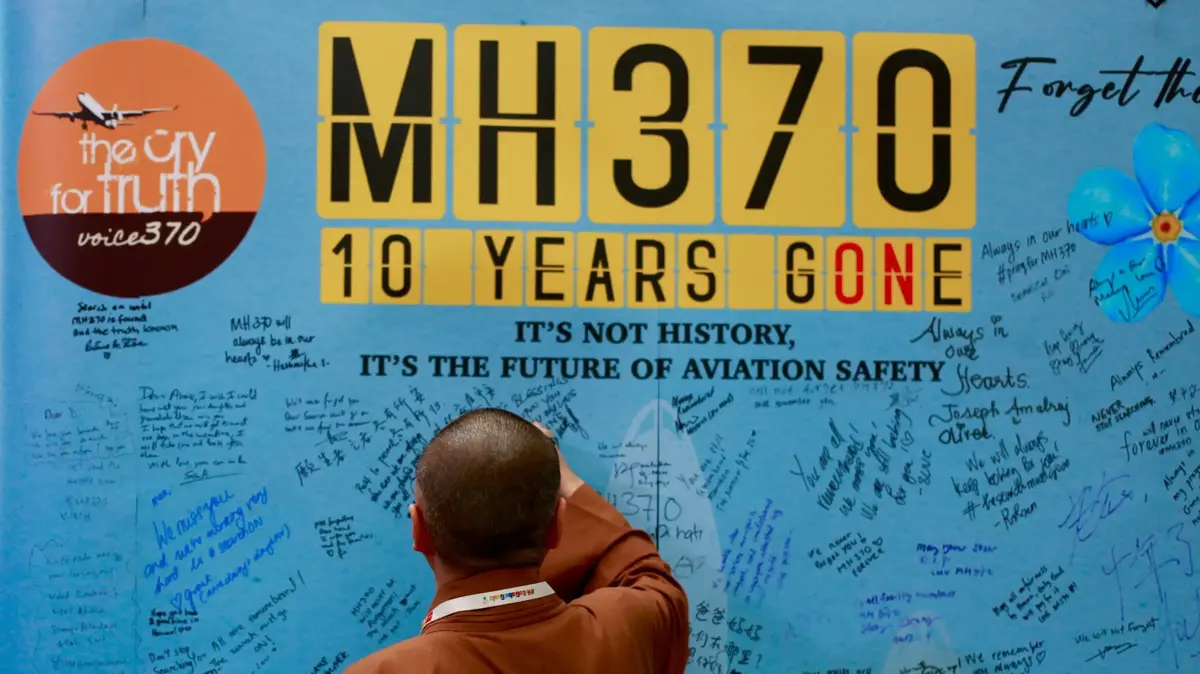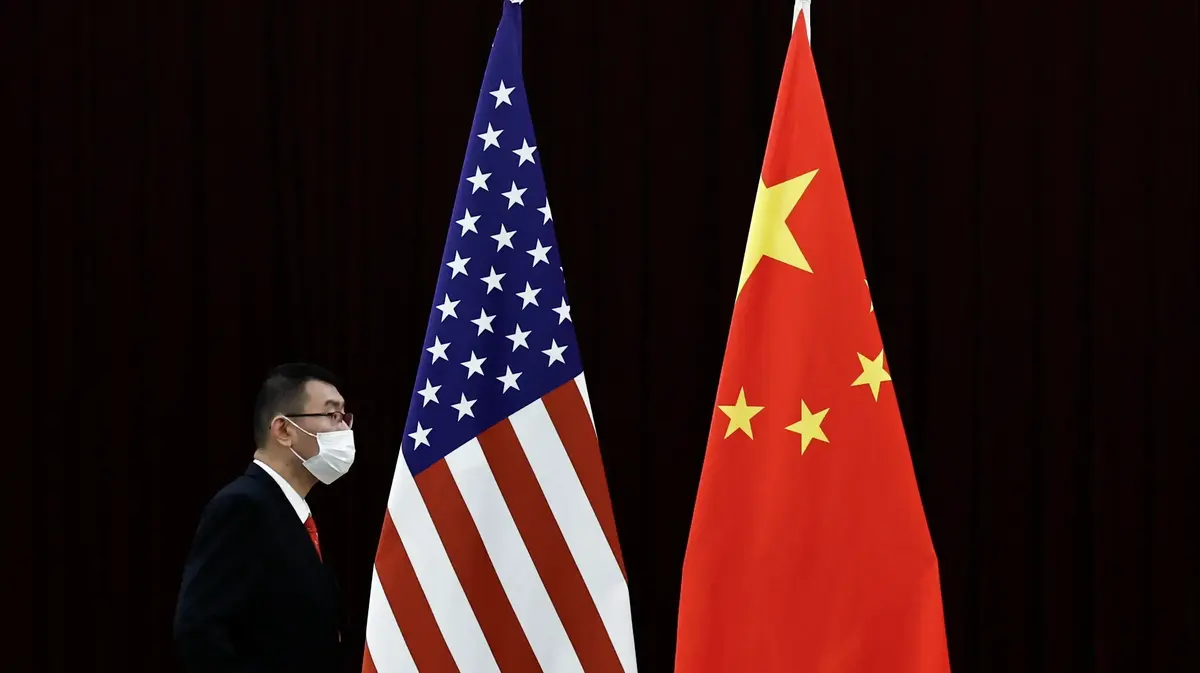Janis Mackey Frayer and Denise Chow - NBC News
Cloistered near a major pedestrian thoroughfare, the Wuhan Institute of Virology could pass for a university campus; Its red brick buildings are distinguished in the busy surroundings only by a long and imposing entrance lined with cameras and with a security guard standing as if he were a sentry.
A more modern structure with silver walls and few windows stands out on the well-kept grounds and next to a small man-made lake.
It is the institute's BSL-4 laboratory, the first in China to receive the highest authorization in biosafety and which is ground zero of the international storm caused by China's role in the coronavirus pandemic.
On Friday, Telemundo's sister network NBC News became the first foreign news organization to gain access to the institute since the outbreak began, meeting with high-level scientists working to identify the origins of the virus.
The Wuhan institute and its scientists have become the focus of intense speculation and conspiracy theories, some even coming from the White House, about China's alleged efforts to minimize the severity of the outbreak and whether the virus spread from there. installation.
During the approximately five-hour visit, which included a tour of the BSL-4 laboratory, where technicians dressed in protective suits as if they were inside a bubble handled small injectable glass ampoules and other isolated equipment in a thick-walled glass enclosure Wang Yanyi, director of the Wuhan Institute of Virology, said that she and other workers felt unfairly attacked. She further urged that the policy not cloud ongoing investigations into how the coronavirus spread to humans.
"It is unfortunate that we are the scapegoat of the origin of the virus," he lamented.
"Anyone would feel very angry or misunderstood to be the subject of unjustified or malicious accusations while conducting research and related work in the fight against the virus," he said.
The first cases of a disease with symptoms similar to pneumonia were made public in December in Wuhan, a sprawling Chinese city of 11 million people surrounded by the Yangtze River in central Hubei province.
[Wuhan detects a new source of infection and fears a second wave of COVID-19 infections]
The Wuhan Institute of Virology, founded in the 1950s, is a prominent facility that gained even more prestige after the opening of the BSL-4 lab in 2015. These days, lab scientists focus on the coronavirus, but Typically, work at the facility includes research on some of the most dangerous known viruses, including Ebola, Nipah, and Crimean-Congo hemorrhagic fever.
Because the Wuhan institute is equipped to study the world's highest-risk infectious agents and toxins, such as the coronavirus, which is believed to have originated in bats, it has become the target of accusations that it could be linked to the origin of the outbreak.
During an event at the White House on April 30, President Donald Trump addressed a possible relationship between COVID-19 and the laboratory. When asked if he had seen evidence to suggest that the virus originated from those Wuhan facilities, Trump responded, "Yes, I do."
But when he refused to elaborate, he simply replied, "I can't tell you that. I can't tell you that.
Wuhan celebrates end of quarantine with impressive light show
April 7, 202000: 35A 2018 State Department internal communication that raised concerns with officials at the U.S. Embassy in China about the safety and training of staff members at the Wuhan Institute of Virology.
[In pictures: Wuhan, the Chinese city that exported the coronavirus to the world, comes back to life after 11 weeks of closure]
The White House has shown no credible evidence to support claims that the coronavirus was accidentally created and spread from that lab. But Trump continues to blame China, with his usual racist rhetoric, when he refers to the pathogen as the "China virus", the "Wuhan virus" or the "kung flu."
Secretary of State Mike Pompeo has also made similar claims without providing proof.
In April, officials told NBC News that US Intelligence was investigating whether the virus accidentally originated and left the Wuhan lab, but at the time spy agencies ruled out that COVID-19 had been created by humans, according to officials.
Democrats in Congress say requests to officials to provide evidence of the virus's relationship with the Wuhan laboratory have been ignored.
The White House declined to comment on the matter.
"Zero evidence"
At the beginning of the tour of the institute, a guard took the temperature of the equipment and recorded the equipment necessary for the recording. At the facilities, workers wear normal clothing and masks, which have become ubiquitous in China due to the pandemic.
Trees dot the mountainous landscape along the path leading to the institute's BSL-4 lab, which was given access to NBC News, though it was unable to access what is considered the germ-free area.
During separate 50-minute interviews with a government representative, Wang and Yuan Zhiming, deputy director of the institute, and the rest of the interviewees strongly denied that the virus could have originated at the institute. They also made it clear that scientists at the facility obtained the first samples of the coronavirus after the disease had begun to spread among the population.
[This is how the city of Wuhan lives its first day without quarantine]
"I have repeatedly emphasized that it was December 30 that we had contact with samples of SARS-like pneumonia or pneumonia of unknown cause that were sent from the hospital," Yuan reiterated. "We had no information on the new coronavirus prior to that date and there is no way it was leaking from the lab."
Wang said none of the institute's scientists contracted the virus, which, in his view, was extremely unlikely that the pathogen could have escaped the facility.
NBC News could not verify his statements about when the lab first received samples of the virus or if any of its scientists became ill.
Coronavirus: Latinos in Wuhan describe how to live in the epicenter of the epidemic
Feb. 13, 2020Peter Daszak, president of the EcoHealth Alliance, a New York City-based nonprofit dedicated to studying and preventing pandemics and worked with the Wuhan institute for 16 years until the U.S. government cut funding, too. He rejected the idea that the virus could have leaked out from inside the laboratory.
"The fact that they released information quickly suggests that they weren't trying to cover up anything," he said. There is "absolutely no evidence that it escaped from a laboratory."
[Coronavirus: Latinos in Wuhan describe how to live in the epicenter of the epidemic]
In May, the director of the National Institute of Allergies and Infectious Diseases, Anthony Fauci, assured National Geographic that he dismissed the idea that the virus had accidentally escaped from a laboratory.
Yuan specified that all staff at the facility are regularly tested and so far no one has tested positive for the virus or its antibodies.
Wang and Yuan also questioned a 2018 State Department internal cable that raised concerns with officials at the US embassy in China about the safety and training of the institute's staff members.
The cable's content was leaked this year and was later published at the request of The Washington Post, which took advantage of the constitutional freedom of information clause. The officials alleged that they observed "a serious shortage of properly trained technicians and researchers necessary to safely operate this laboratory with high containment of dangerous viruses."
Wang questioned the conclusions. He explained that US officials visited the Wuhan Institute of Virology, but in March 2018, about two months after January 19, 2018, when the internal communication was sent. He added that officials did not visit any of the facility's laboratories and did not discuss biosafety procedures.
Wang and Yuan's comments echo those of other Chinese officials who insist that, rather than being criticized, China should be praised for its efforts to contain and identify the virus. But those arguments have been undermined by the Chinese government's history of exercising control over scientific data and the country's lack of transparency during the pandemic, according to critics.
The State Department did not respond directly to Wang and Yuan's claims that US officials had not visited the lab prior to the January internal communication about the lab, although a spokesperson stated that "the Chinese government has yet to share enough data or samples with the international community ".
"We still don't have the answers we need about a virus that has killed 700,000 people," he complained. "For the world to have those answers, Beijing must provide open and transparent access to the comprehensive information necessary to enable a complete understanding of the origins of the virus."
Wang said the institute will "fully support" the World Health Organization (WHO), which has sent a team to China to interview scientists in Wuhan and develop a framework to investigate the origin of the coronavirus.
He also called for greater international collaboration, but China and the United States remain at odds: Tensions escalated in 2018 with trade disputes, then escalated a year later over China's Xinjiang policy and protests in Hong Kong, and worsened further. for the pandemic.
The United States raises tension with China by ordering the closure of its consulate in Houston
July 22, 202001: 41In April, the US National Institutes of Health terminated funding funding the EcoHealth Alliance's collaboration with the Wuhan Institute of Virology. The long-term project aimed to identify areas at risk for emerging infectious diseases and collect as well as study bat samples to prevent future coronavirus outbreaks. Yuan said the institute was not given a reason for the cancellation of the grant.
The National Institutes of Health did not respond to requests for comment.
A mysterious pneumonia
About eight months after a pandemic that has killed more than 720,000 people and undermined the global economy, where and when the virus emerged remains a mystery.
The first unexplained cases of a pneumonia-like illness were reported to the WHO office on December 31, and detailed information on "viral pneumonia of unknown cause" was provided on January 3, according to the agency.
Trump has accused the WHO of failing to adequately warn the world about the coronavirus outbreak and that the agency's response to the outbreak, which it calls a "puppet of China," allowed the pandemic to spiral out of control. That same month, he announced that the United States would withdraw the funds from the agency.
Events since the beginning of the coronavirus outbreak have come under intense scrutiny, including whether China acted quickly enough to alert the WHO to evidence that the virus was being transmitted between humans.
Local authorities have been criticized for downplaying the threat to the public and being slow to impose closure measures in Wuhan, which took effect on January 23.
Reports also emerged that the Chinese government had suppressed information about the coronavirus, including police punishing a 34-year-old doctor named Li Wenliang after he warned about the virus in a chat group on the WeChat app in late December. .
Li died of COVID-19 on February 7, and the government subsequently carried out an investigation, took disciplinary action against the policemen involved, and posthumously hailed Li as a "martyr."
And despite the country's experience with SARS, another type of coronavirus that emerged in China in 2003 before spreading to four other countries, Chinese authorities have been accused of not doing enough to stop the trade in exotic animals, which they can infect humans known as zoonotic diseases.
The "wet market" is a focus
Early research suggests that this virus closely resembles a known coronavirus that horseshoe bats harbor, but discovering its origin, and whether there was an intermediate animal that was infected before infecting humans, it will probably be a long and complicated process.
Some of the first reported cases were traced to the Huanan Seafood Market in Wuhan, a "wet market" where open-air stalls sell a variety of meat, seafood and live animals for human consumption. Public health officials have warned that these types of live animal markets can be hotbeds for emerging infectious diseases.
Yuan, deputy director of the Wuhan institute, said scientists have yet to find irrefutable evidence linking the pathogen to that market.
"So far, there is no evidence to show that the new coronavirus jumped from animals to people at the Huanan seafood market in Wuhan," he noted, adding that it is not yet clear "how it would have jumped from animals to humans. in the early stages, which animal could have been the transmitter and when the massive contagion began. "
The Huanan seafood market closed on January 1, and while scientists from the Chinese Center for Disease Control and Prevention were reported to have collected samples at the site, most of the data has not been made public, fueling even more the suspicions that weigh on the Chinese government.
Scientists can obtain information about a virus from its genetic material, but the molecular makeup of a pathogen does not reveal everything about its origin. The Wuhan Institute of Virology participated in the sequencing of the coronavirus genome, and Chinese researchers published the results on January 12. The virus genome revealed that it was a new pathogen, but there were marked similarities between this coronavirus and one from a bat sample collected in 2013 in Yunnan province. The coronavirus genomes were found to be 96.2 percent the same, but the differences are crucial, said Shi Zhengli, a leading bat researcher who heads the Center for Emerging Infectious Diseases at the Wuhan institute.
Based on the two sequences, it would take more than 1,100 mutations for the virus isolated in the 2013 sample to evolve into the coronavirus strain that is spreading around the world, he explained.
The WHO has argued that animals could harbor coronarivus and the authors of a study published in March in the journal Nature said it is "unlikely" that the pathogen arose as a result of laboratory manipulations of a related coronavirus.
About a month before that paper was published, 27 public health scientists from nine countries signed a statement in the medical journal The Lancet supporting their colleagues in China and rejecting misinformation surrounding the pandemic.
This year's US decision to end funding for EcoHealth Alliance bat research also sent alarm bells through the scientific community, a sentiment Daszak, its president, said he shared. "Cutting our relationship with the scientists on the ground, the places where these pandemics start, is absolutely wrong," he said.
Photographs of the lab's construction and opening, a collaboration with France, decorate a wall leading to the institute's lab. The lab technicians were trained in Lyon, France, and at least two of them were educated in Galveston, Texas, reported Yuan, who lamented that worsening US-China relations is damaging scientific collaboration and claimed that the world I'd be better off with more and not less cooperation. "We do not want to see the tension between China and the United States, because it is not good for scientific development. It is not good for the progress and stability of the world."
"We have learned a lot from American scientists in terms of scientific technology, spirit, and relevant experience." "During this pandemic, I believe that we must still believe in science, respect science and trust scientists," he concluded.


/cloudfront-eu-central-1.images.arcpublishing.com/prisa/WJFHPOG4VZ45FI6CJPBMJ3UB34.jpg)


/cloudfront-eu-central-1.images.arcpublishing.com/prisa/QYARZLICO47BA5G6YE4UUN26IQ.jpg)









